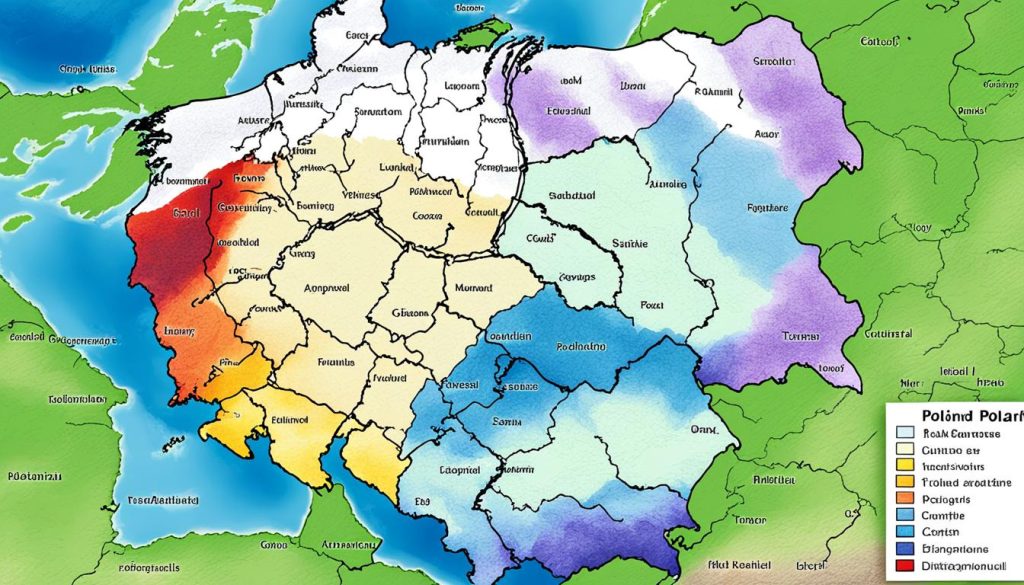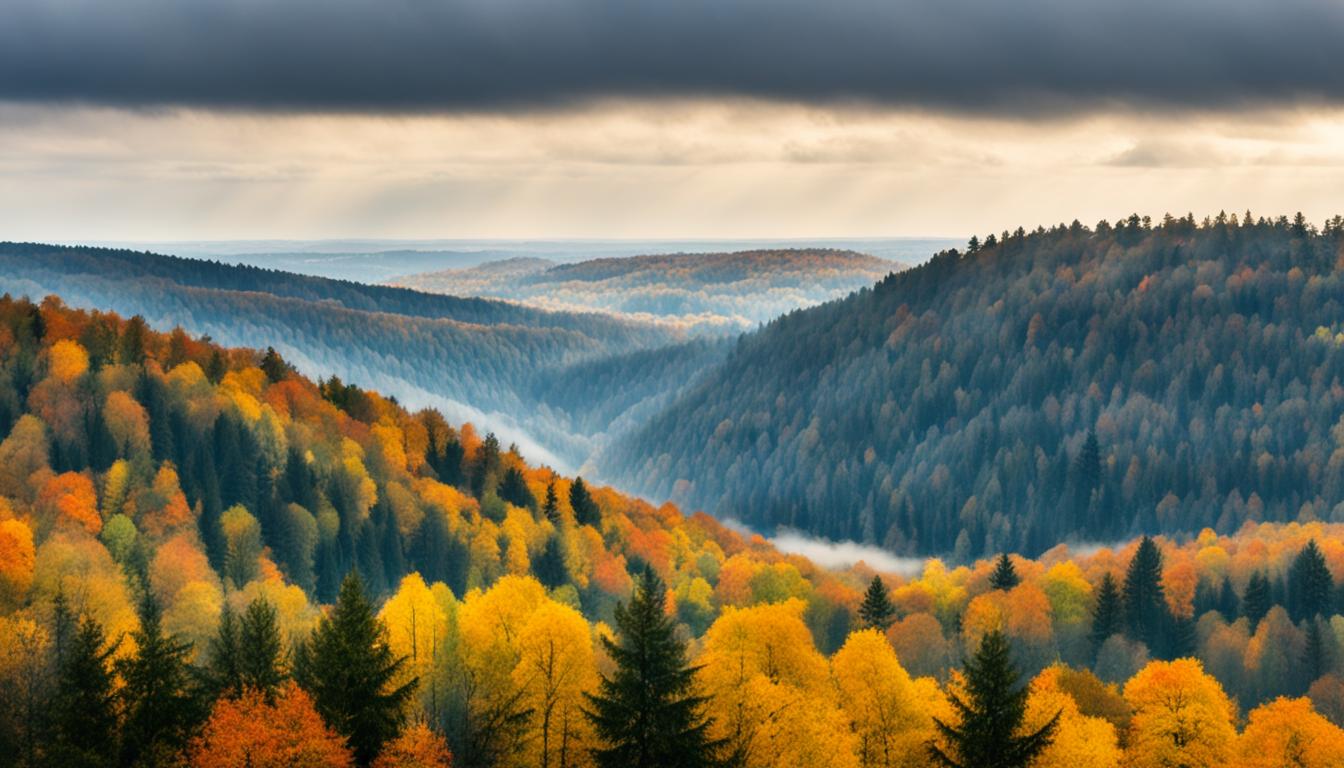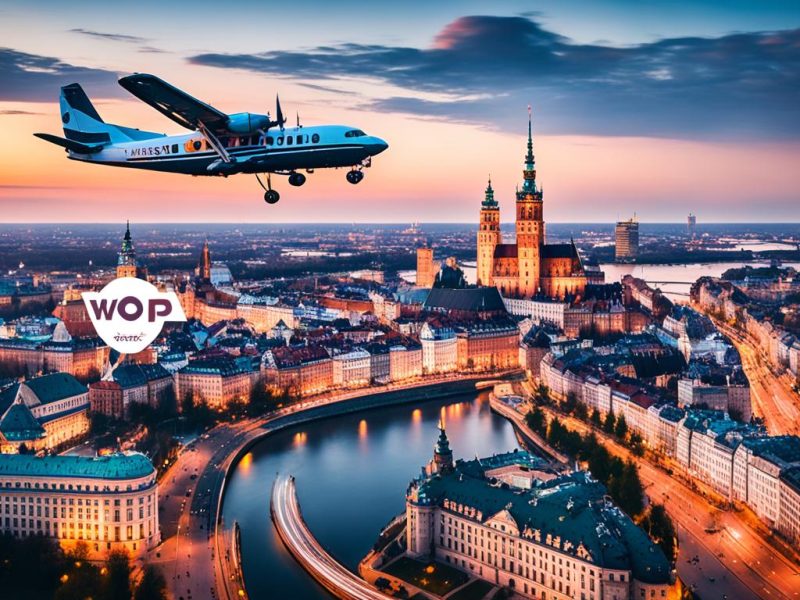If you’re thinking of visiting Poland, it’s vital to understand its weather first. Poland is a country with diverse cultures and landscapes. Because of this, it sees different kinds of weather through the year. This guide gives you all you need to know about Poland’s weather. It will help make sure your trip is well planned. You will learn about the warm summers and cold winters. Each season brings its own beauty, making Poland great to visit any time.
Key Takeaways
- Recognise the diverse Poland climate to optimally plan your travels.
- Stay ahead with the latest weather forecast Poland to ensure a seamless experience.
- Gain insight into the distinctive seasonal weather Poland patterns for better preparation.
- Explore the cultural and natural spectacles Poland offers throughout the different seasons.
- Utilise this guide to align your travel planning Poland with the ideal weather conditions.
Understanding Poland’s Climate Zones
Poland has a variety of climate zones, thanks to its unique location. From north to south, its geography changes a lot. These differences greatly impact the local weather. Knowing this is key for anyone wanting to see all that Poland offers.
Geographical Influences on Poland’s Weather
Poland’s climate changes from the northwest to the southeast. This switch is mainly because of where Poland is on the map. The country’s various landscapes have a big say in its weather patterns.
The Baltic Sea Effect on the Northern Regions
In the north, the Baltic Sea helps to keep the climate steady. Winters are not too cold, and summers are cooler than in other parts. The sea also brings more moisture and makes the seasons change gently.
Mountainous Weather Patterns in the South
Down south, near the Carpathian Mountains, things are different. The higher ground means colder winters with lots of snow. This is perfect for those who love winter sports.
Central Plains: A Mix of Influences
The Central Plains lie in between. Here, the weather is a mix of the oceanic and continental climates. It changes more through the year than in the north but is not as harsh as in the mountains.

Poland Weather: What to Expect Each Season
Poland’s weather changes with the Poland seasons. Knowing what to expect can really help you plan. You’ll see everything from the warm summer in Poland to the chilly winter climate Poland has.
In summer in Poland, the days are long and sunny. Temperatures can get into the mid-20s Celsius, perfect for being outdoors. Just remember, it might rain sometimes, so bringing an umbrella is a good idea.
The winter climate Poland presents is quite harsh. Temperatures often drop below freezing. There’s a lot of snow, great for winter sports. You’ll need warm clothes and boots from December through February.
Autumn transforms the scenery into a mix of oranges and reds. The autumn foliage in Poland signals cooler weather and shorter days.
Then comes spring weather Poland with its mild climate. Everything starts to bloom again. It’s a great time for those who like softer temperatures and nature’s revival.
| Season | Typical Weather | Travel Tips |
|---|---|---|
| Spring | Mild temperatures with blooming flora | Light jackets and comfortable shoes |
| Summer | Warm with occasional showers | Sunscreen, hats, and an umbrella for unexpected rain |
| Autumn | Crisp air with colourful foliage | Layered clothing to adapt to variable temperatures |
| Winter | Cold and snowy, particularly in mountainous areas | Thermal wear and sturdy boots for snowy conditions |
Every season in Poland brings its charm. From the lively summer in Poland to the snowy winter climate Poland. Or the beautiful autumn foliage, there’s always something spectacular. The mild spring weather Poland is also great for exploring with fewer tourists.
Conclusion
Travelling to Poland is more than checking the weather app. This article explored Poland’s various climates. It’s vital for planning your holiday in Poland. We experienced the Baltic Sea’s cool breeze and the Carpathian Mountains’ snow. We also saw the Central Plains. These journeys highlight the importance of knowing Poland’s weather. It shows the country’s beauty.
Choosing when to visit Poland depends on its climate patterns. You could enjoy the Tatra National Park’s summer sun or Krakow’s springtime beauty. Poland’s weather suits all preferences. Knowing the weather in advance can help make your trip perfect.
Poland’s tourism offers a great experience for those who plan ahead. Our guide provides weather tips to enhance your visit. Spending time understanding Poland’s weather benefits your trip. With this knowledge, you can plan a flexible, enjoyable trip. You’ll enjoy each season’s special beauty.
FAQ
What kind of climate does Poland have?
Poland experiences a temperate climate with maritime and continental effects. This results in variable weather through the year.
How does the Baltic Sea influence weather in northern Poland?
The Baltic Sea makes northern Poland’s climate cooler and more humid. This means milder winters and cooler summers there.
Can travellers expect much snow in the Polish mountains?
Yes, the Polish mountains, especially near the Carpathians, get a lot of snow. This makes them great for winter sports.
What is the weather typically like during summer in Poland?
Polish summers are warm with some rain. The days are usually comfortable for exploring, making summer a good time for tourists.
When can visitors enjoy the autumn foliage in Poland?
Autumn colours peak from late September to October in Poland. The landscape becomes a canvas of red, yellow, and brown.
What weather conditions should be expected during winter in Poland?
Polish winters are chilly with snow, especially from December to February. Remember to bring warm clothes and prepare for less daylight.
Is spring weather in Poland suitable for outdoor activities?
Spring in Poland is perfect for being outdoors. The weather gets milder, and days start to stretch out.
What are the geographical climate zones of Poland?
Poland’s climate zones vary from the Baltic Sea’s influence in the north, the Carpathians’ snowy south, to the mixed climate Central Plains.
When is the optimal travel time to visit Poland?
The best time for visiting Poland changes with your weather preference. Summers are warm, and winters are ideal for snow sports. Autumn and spring offer mild weather and fewer crowds.
How should tourists prepare for Poland’s weather?
To prepare for Poland’s weather, pack for the season, check forecasts, and be ready to adjust plans for unexpected changes.



